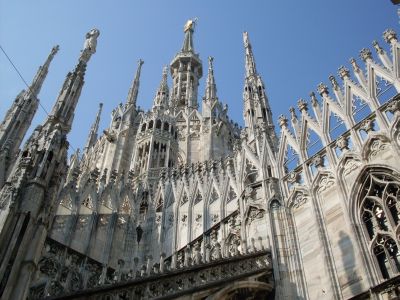
In the following section, Set Theory is presupposed with the Euclidean norm \(||\cdot||\).
Definition: A family of sets \(\mathbb{Y} \subseteq \mathcal{P}(X)\) is called topology on \(X \subseteq R\) if every intersection and union of sets of \(\mathbb{Y}\) belongs apart from \(\emptyset\) and \(X\) to \(\mathbb{Y}\). The pair \((X, \mathbb{Y})\) is called topological space. If \(\mathbb{Y} = \mathcal{P}(X)\), the topology is called discrete. A set \(B \subseteq \mathbb{Y}\) is called a base of \(\mathbb{Y}\) if every set of \(\mathbb{Y}\) can be written as union of any number of sets of \(B\). Every irreflexive relation \(N \subseteq {A}^{2}\) founds a NR in \(A \subseteq X\) for the underlying set \(X\).\(\triangle\)
Definition: If \((a, b) \in N\), \(a\) is called neighbour of or neighbouring to \(b\). Particularly, an element \(x \in A \subseteq X\) is called neighbour of an element \(y \in A\), where \(x \ne y\) if for all \(z \in X\) and a mapping \(d: {X}^{2} \rightarrow \mathbb{R}_{\ge 0}\) holds: (1) \(d(x, y) \le \text{max }\{\text{min }\{d(x, z), d(z, x)\}, \text{min }\{d(y, z), d(z, y)\}\}\) and (2) \(d(z, z) = 0\). Here \(d\) is called neighbourhood metric. Let \(P = R \cup V\) be the set of all points partitioned into actual points \(R\) and virtual points \(V\) for \(R, V \ne \emptyset = R \cap V\). When \(R\) or \(V\) is clear from context, it can be omitted.\(\triangle\)
Definition: The set \(A^{\prime} := R \setminus A\), where \(A \subseteq R\), is called complement of \(A\) in \(R\). \(A^{\prime}\) can be called the exterior of \(A\). All points of \(V \; (A)\) that have a neighbour in \(R \; (A^{\prime} \cup V)\) form the (inner) boundary \(\partial V \; (\partial A)\) of \(V \; (A)\). Here \({}^{\prime}\) takes precedence over \(\partial\). When \(\partial\) is applied successively beyond that, the argument is assumed to be without complement. The set \(A° := A \setminus \partial A\) is called the interior of \(A\). If \(\partial A \subseteq A\) is increased by the condition min \(\{d(x, y) : x \in A°, y \in A^{\prime}\} = \tilde{\nu}\), let \(A^{\ll} := A \setminus \partial A.\triangle\)
Definition: A set \(S \subseteq R \; (V)\) is said to be connected if there is for every partition of \(S\) into \(Y \cup Z\) such that \(Y, Z \ne \emptyset = Y \cap Z\): \(\partial Y^{\prime} \cap \partial Z \ne \emptyset \ne \partial Z^{\prime} \cap \partial Y\). \(S \subseteq R\) is moreover said to be simply connected if holds: Both \(\partial Y^{\prime} \cap \partial Z \cup \partial Z^{\prime} \cap \partial Y\) for every partition into connected \(Y\) and \(Z\) and \(S^{\prime} \cup (\partial)V\) for \( S^{\prime}\) as complement of \(S\) in \(R\) are connected for a connected (\(\partial)V\). Let \(P\) and \(R\) be simply connected. Every \(U \subseteq R\) is called neighbourhood of \(x \in R\) if \(x \in U°.\triangle\)
Definition: If \(\emptyset \ne \mathbb{D} \subseteq (X, \mathbb{Y})\) holds, a connected \(\mathbb{D}\) is called domain. The set of \(h\)-\(S \subseteq \mathbb{R}^{m}\) for \(m \in \mathbb{N}^{*}\) is \(n\)-dimensional, where \(m \ge n \in \mathbb{N}^{*}\), if and only if it contains at least one \(n\)-cube with edge length \(h \in \mathbb{R}_{>0}\) and maximum \(n\). Let \({}^1\dot{\mathbb{R}}^n\) the unit ball with the special case unit disk \({}^1\dot{\mathbb{R}}^2\). Midpoints \(a\) of \(n\)-balls and \(n\)-cubes may be denoted in brackets as (\(a\)) after those. A set has dimension \({}_{\tilde{\iota}}n\) if its elements consist of \(n\) maximal cubes of edge length \(\iota.\triangle\)
Examples: The base for \(\mathbb{N}, \mathbb{Z}, \mathbb{A}_\mathbb{R}, \mathbb{A}_\mathbb{C}, \mathbb{R}\) and \(\mathbb{C}\) is precisely each related discrete topology. The boundary of every \(n\)-ball with \(n \ge 2\) is only connected, itself it is simply connected. For \(n = 1\) both are not connected. For \(n \ge 2\) and \(r \in \mathbb{R}_{>0}\), the \(n\)-Torus \({}^r\mathbb{T}^n := \left(\partial{}^r\dot{\mathbb{R}}\right)^n\) is only connected.
Theorem: For \(n \in \mathbb{N}_{\ge 2}\), no finite decomposition of an \(n\)-ball can be reassembled giving an \(n\)-cube, since finitely many convex boundaries cannot have the same order of concave counterparts.\(\square\)
Theorem: Traversing up to nine cells of a tic-tac-toe grid renders the singleton the only connected set with fixed point property (invalid hairy ball theorem).\(\square\)
Definition: A function between two topological spaces is said to be continuous if for every point that can be mapped holds: for every neighbourhood of the image of this point there is a neighbourhood of the point whose image lies completely in the neighbourhood of the image of this point.\(\triangle\)
Remark: The suggestive terms compactness and countability (possibly misleading) are not used since they are not given for infinite sets like \(\mathbb{R}\) and \(\mathbb{N}\) resp. For all contracting deformations, points are to be removed from the target set as the contraction specifies. Only then the (generalised) Poincaré conjecture holds.
Remark: An exact topology is represented, in which different infinitesimal distances establish an infinitesimal-discrete structure that can model Weyl and higher symmetries. It differs from standard topologies by making separation axioms obsolete and by not being Hausdorff. It can, for example, mitigate the wave-particle duality by using a unified model and nonstandard analytical methods to reflect reality.
© 2013-2025 by Boris Haase